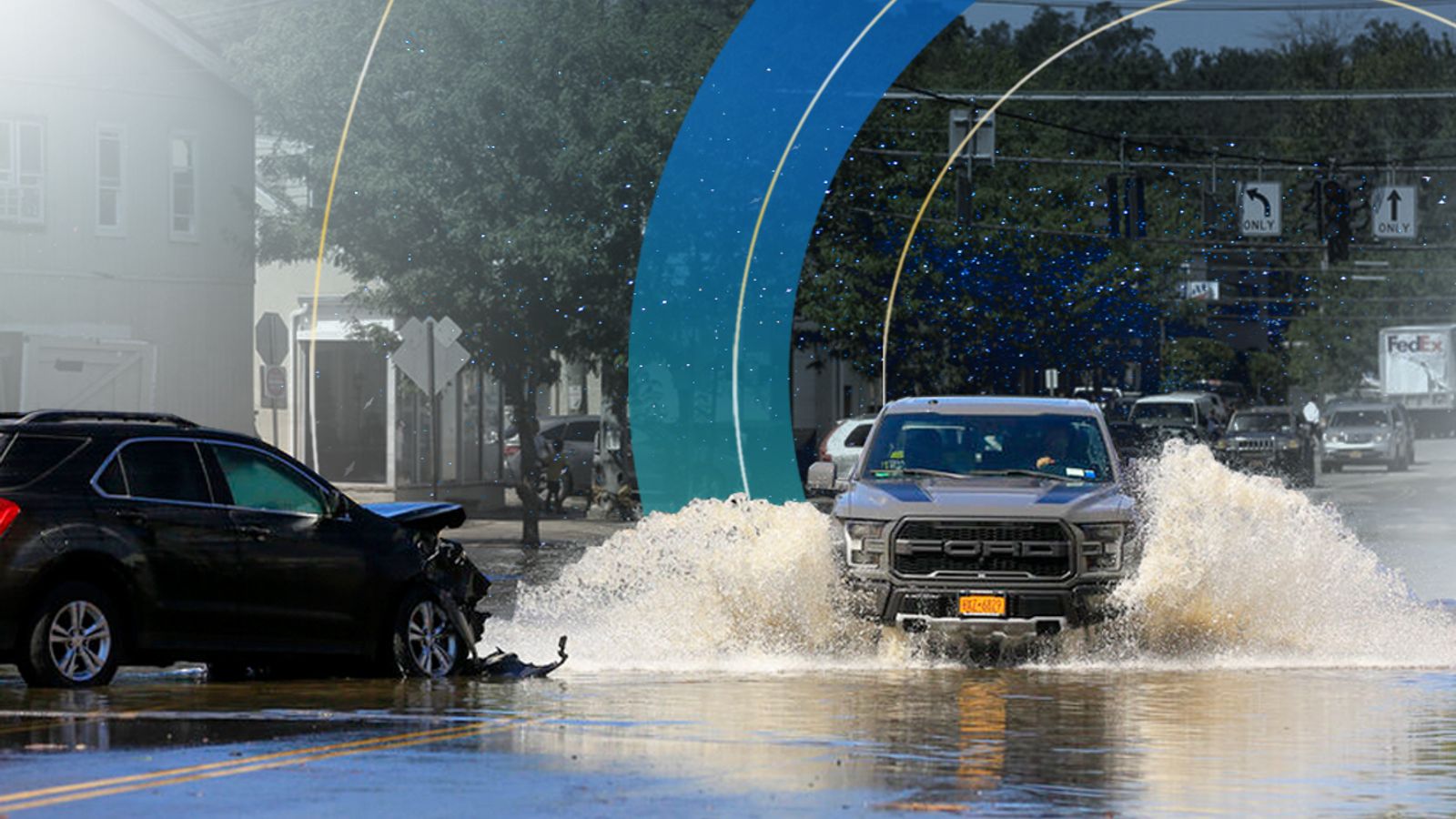Climate Change, Ocean Currents, And Rising Sea Levels In The United States

Table of Contents
The Impact of Climate Change on Ocean Currents
Climate change is significantly altering ocean currents, impacting global weather patterns and exacerbating sea level rise. The warming of our planet disrupts the delicate balance of ocean temperatures and salinity, affecting the density-driven circulation that powers major currents like the Gulf Stream and the California Current. Warmer waters expand, occupying more space and contributing directly to rising sea levels (thermal expansion). Furthermore, the melting of glaciers and polar ice caps adds more freshwater to the oceans, further impacting the density and flow of currents.
The consequences of these changes are far-reaching:
- Weakening of the Gulf Stream: A slowdown in the Gulf Stream, a major warm current impacting the East Coast of the US, could lead to colder temperatures and altered weather patterns in the region. Studies suggest a potential link between climate change and this observed weakening.
- Changes in the California Current: The California Current, crucial for upwelling nutrient-rich cold water that supports marine ecosystems, is experiencing alterations in its strength and trajectory due to warming waters. This impacts the West Coast's fisheries and marine biodiversity.
- Increased frequency and intensity of extreme weather events: Disrupted ocean currents can contribute to more frequent and intense hurricanes, storms, and other extreme weather events, particularly along the US coastline.
How Ocean Currents Contribute to Rising Sea Levels in the US
Ocean currents play a crucial role in the distribution of heat and water around the globe, directly influencing regional variations in sea level rise. While the global average sea level is rising, the rate of increase varies considerably across the US coastline.
- Thermal Expansion: As ocean water warms, it expands, directly contributing to sea level rise. This effect is amplified in regions with strong warm currents.
- Melting Glaciers and Ice Sheets: The melting of glaciers and ice sheets in Greenland and Antarctica adds vast quantities of freshwater to the oceans, further raising sea levels. Ocean currents distribute this meltwater, affecting regional variations.
Regional differences in sea level rise are significant:
- Higher rates in the Southeast: The Southeast US experiences higher rates of sea level rise, partly due to the influence of warm ocean currents and land subsidence.
- Lower rates in some areas: Certain areas might experience lower rates of sea level rise due to factors like tectonic uplift or counteracting oceanographic processes. However, these areas are not immune to the overall effects of climate change.
Visualizing these regional differences using maps and satellite data is crucial for understanding the varying levels of vulnerability across the US coastline.
Regional Impacts and Vulnerability in the United States
Rising sea levels pose significant threats to coastal communities and infrastructure across the United States. The impacts vary regionally, depending on factors such as the rate of sea level rise, the slope of the coastline, and the presence of protective natural barriers.
Specific impacts include:
- Coastal Erosion: Rising sea levels accelerate coastal erosion, threatening homes, businesses, and vital infrastructure. The Outer Banks of North Carolina are a prime example of this vulnerability.
- Increased Flooding: Higher sea levels exacerbate the impacts of storm surges and high tides, leading to more frequent and severe flooding events. Cities like Miami are particularly at risk.
- Saltwater Intrusion: Rising sea levels can cause saltwater to intrude into freshwater aquifers, impacting drinking water supplies and agricultural lands. This is a growing concern in areas like Louisiana.
Vulnerable areas and their associated risks:
- Miami, Florida: High risk of flooding and damage to infrastructure.
- Outer Banks, North Carolina: Severe coastal erosion and increased vulnerability to storms.
- Louisiana Coastal Wetlands: Significant saltwater intrusion affecting agriculture and ecosystems.
The economic and social consequences of rising sea levels are substantial, including displacement of populations, damage to property, and disruption of economic activities.
Mitigation and Adaptation Strategies
Addressing the challenges posed by climate change, ocean currents, and rising sea levels requires a two-pronged approach focusing on mitigation and adaptation.
Mitigation Strategies: These aim to reduce greenhouse gas emissions to slow the rate of climate change:
- Transitioning to renewable energy sources: Reducing reliance on fossil fuels is crucial.
- Improving energy efficiency: Reducing energy consumption across all sectors.
- Carbon capture technologies: Developing and deploying technologies to capture and store carbon dioxide.
Adaptation Strategies: These focus on reducing vulnerability to the impacts of rising sea levels:
- Building seawalls and other coastal defenses: Protecting coastal communities and infrastructure from flooding and erosion.
- Restoring coastal wetlands: Wetlands act as natural buffers against storm surges and erosion.
- Managed retreat: Relocating communities and infrastructure away from vulnerable areas.
- Implementing sustainable land use practices: Preventing further development in high-risk areas.
Government policies and initiatives are vital for driving these mitigation and adaptation efforts. Investment in research, infrastructure, and community resilience is crucial for protecting the US coastline.
Conclusion: Understanding Climate Change, Ocean Currents, and Rising Sea Levels in the United States
The interconnectedness of climate change, ocean currents, and rising sea levels in the United States presents a serious and multifaceted challenge. Understanding the science behind these processes is crucial for developing effective mitigation and adaptation strategies. The impacts on coastal communities, ecosystems, and the national economy are profound and require immediate attention. We must act decisively to reduce greenhouse gas emissions and build resilience against the effects of rising sea levels.
To learn more about this critical issue and how you can contribute to solutions, explore resources from the National Oceanic and Atmospheric Administration (NOAA), the Environmental Protection Agency (EPA), and other reputable organizations working on climate change and sea level rise. Become informed, support climate action initiatives, and advocate for policies that address climate change, ocean currents, and rising sea levels in the United States. Our future coastal communities depend on it.

Featured Posts
-
 Australian Man Sentenced To 13 Years In Russian Prison For Fighting In Ukraine
May 18, 2025
Australian Man Sentenced To 13 Years In Russian Prison For Fighting In Ukraine
May 18, 2025 -
 Financial Strain On Universities Exploring The Consequences Of Funding Cuts
May 18, 2025
Financial Strain On Universities Exploring The Consequences Of Funding Cuts
May 18, 2025 -
 Damiano David Of Maneskin On Jimmy Kimmel Live Highlights And Fan Reactions
May 18, 2025
Damiano David Of Maneskin On Jimmy Kimmel Live Highlights And Fan Reactions
May 18, 2025 -
 Moodys Us Downgrade White House Condemnation And Economic Fallout
May 18, 2025
Moodys Us Downgrade White House Condemnation And Economic Fallout
May 18, 2025 -
 Osama Bin Ladens Demise An In Depth Review Of American Manhunt
May 18, 2025
Osama Bin Ladens Demise An In Depth Review Of American Manhunt
May 18, 2025
Latest Posts
-
 Snl Spoofs Signal Leak With Mikey Madison Texting Government Officials
May 18, 2025
Snl Spoofs Signal Leak With Mikey Madison Texting Government Officials
May 18, 2025 -
 Michelle Williams Clarifies Dying For Sex Scene With Marcello Hernandez
May 18, 2025
Michelle Williams Clarifies Dying For Sex Scene With Marcello Hernandez
May 18, 2025 -
 Michelle Williams On Dying For Sex Clasp Scene Unanswered Questions
May 18, 2025
Michelle Williams On Dying For Sex Clasp Scene Unanswered Questions
May 18, 2025 -
 Ram Fest 2024 Snls Marcello Hernandez Delivers Hilarious Performance
May 18, 2025
Ram Fest 2024 Snls Marcello Hernandez Delivers Hilarious Performance
May 18, 2025 -
 The Papacy And The Future Perspectives From West Palm Beach Catholic Students
May 18, 2025
The Papacy And The Future Perspectives From West Palm Beach Catholic Students
May 18, 2025
